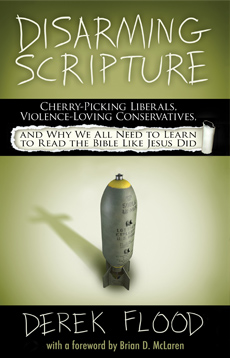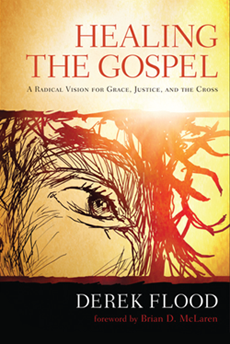What the Church Can Learn from Artists
Sunday, July 10, 2011
(reprinted from the Huffington Post)
Christianity has a long history of incorporating art into its liturgy and worship. Some classic examples of this are cathedral architecture with its soaring towers and stained glass windows, the religious paintings of artists like Michelangelo and Rembrandt, and of course hymns and classical music. Of course there are modern versions of all of this too that incorporate contemporary music and visual media into services.
What Christians are much less aware of is how the artist's unique perspective can enrich and deepen how we approach theology. So in this post I'd like to take a look at what doing theology as an artist looks like, and how that differs from the way theology has typically been done.
Let me begin by offering a definition of art: First of all, art is not just about creativity. That's part of it, of course, but lots of other work involves creativity too. Art in particular is about taking something in your heart, and putting it out there (on paper, a movie screen, a song, etc.) in such a way that another person can connect with it in his or her heart. A musician writes a song about a breakup, and you hear that song and deeply connect with it. It captures how you are feeling about your own breakup so much that it makes you want to sing it at the top of your lungs as you drive in your car. Art makes us laugh, makes us cry, inspires us or shakes us up because it has become ours. It moves us because we relate to it personally.
Art is something deeply personal of the artist, that becomes deeply personal to us as well. In that sense, the Incarnation can be understood as God's art. It is God's heart, presented in the life, death and resurrection of Jesus. That's why the Apostle Paul calls Jesus the "image of God" (Colossians 1:15). Jesus is God's own self-portrait, and the artistic medium of the Creator is not oils or clay, but life itself. Again, that divine self-portrait, that song of God in Jesus, is successful to the extent that it connects with us, to the extent that it becomes the song we sing, too. That means that truth needs to connect with us personally to function as truth. We cannot remain neutral and detached around it. With art, to be unaffected by it is to not get it, and the Christian story, at its very heart, is God's art. It's not about abstract doctrinal formulations or moral principles, it's about us connecting with what Hans Urs von Balthasar famously called God's theo-drama, God's story. That gospel, that message from God's heart, is not primarily informational, it is incarnational, and thus personal and relational.
Now, all of this is very different from the way Protestant theology has been approached throughout the modern era. There the focus has been on formulating precise doctrinal statements. It seeks to find objective truth by observing as a neutral party from the outside. This approach works well for the natural sciences, but it does not work in human relationships because we do not live in the general. Everything we experience is particular and personal. That's why the artist insists that truth can only be encountered in the concrete and personal, and never in the abstract, never in a detached way. For us as Christians that means knowing truth is about knowing God relationally, not just knowing facts about God.
The difference between the artist's relational approach to faith, as opposed to the more typical dogmatic approach which has characterized modernism, has many implications. It goes a long way toward explaining why the church has had a history of violence, and why many still perceive Christians as being unloving today. These are of course big topics that are beyond the scope of one blog post. So I'll be covering these themes and others in future posts.
What we can see right away however is that, while the church has often viewed artists with suspicion (and vice versa), there is a lot that we can learn from the artist's perspective that can enrich, expand and challenge how we approach faith. It ultimately involves learning to think with both our heads and hearts, developing both cognitive and emotional intelligence. You don't need to know how to paint to do that.
Labels: art, relational theology






0 Comments:
Post a Comment
<< Home